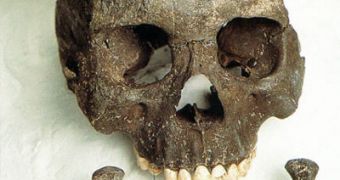Talk about skeletons in the closet! For centuries, experts believed that the ancestors of Native Americans were the first to colonize the New Continent. Their theory was backed up by ample genetic evidence, and yet new findings come to throw some doubts on that established knowledge. While studies on DNA reveal that only one population of individuals settled the continent thousands of years ago, physical discoveries, including well-preserved skeletons, seem to tell a different tale. Researchers now believe that America was settled once before, by an entirely different group, ScienceNow reports.
In an extensive series of scientific investigations, it was revealed that two waves of colonization set out from Asia to the Americas. This conclusion is based on the most accurate and up-to-date analysis of skulls discovered throughout the United States, experts say, and there seems to be only one conclusion – that another group came before the ancestors of modern Native Americans. The study was conducted by an international team of experts, featuring members from Germany and the United States.
The researchers cross-referenced data on the skulls of 20+ Paleoamericans (paleo means old) with those belonging to about 300 Amerindians. The “members” of the first group were estimated to have arrived in America from Asia some 11,000 years ago, whereas the skulls in the second group dated back to 1,000 years ago. As a reference point, the investigations team took 500 East-Asian skulls, which also had their properties measured. Even at a superficial glance, the experts discovered marked differences between the Paleoamerican and Amerindian skulls. Details and full conclusions appear online, in the June 14 issue of the open-access scientific journal PLoS ONE.
“The story of the peopling of the New World was most likely more complex than is commonly thought,” explains researcher Katerina Harvati, a study team member based at the Tubingen University, in Germany. She believes that the new work does not prove for certain that there were two migration waves, but it does raise some very serious doubts as to whether things are as clear cut as experts thought they are. According to University of Pennsylvania molecular anthropologist Theodore Schurr, the new investigation is “perhaps the most sophisticated analysis of craniofacial traits undertaken to date.” He says that he is “willing to accept that there were pulses of migration into the Americas from Northeast Asia at different times,” even if his own work with ancient DNA definitely proves a single migration wave took place.

 14 DAY TRIAL //
14 DAY TRIAL //